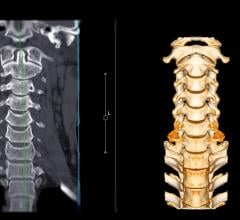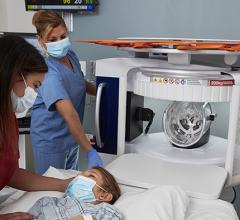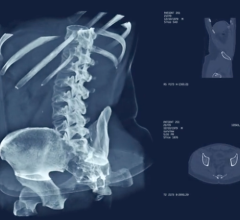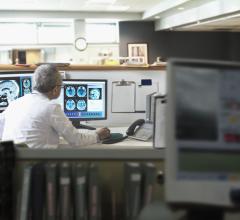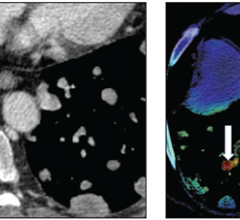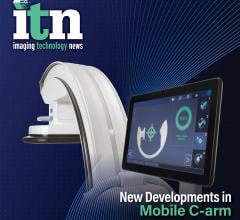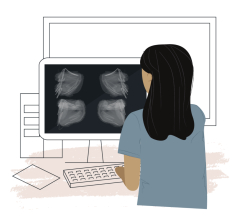BLOG: How PowerShare Drives Adoption of Electronic Image Sharing

Graphic courtesy of Nuance Communications
Approaches to gain widespread use of electronic transmission of patient images may be as varied as the needs and circumstances surrounding institutions, according to three imaging administrators during anITNwebinarabout the challenges of image sharing.
There are, however, common reasons for using this type of transmission. Chief among them are speed and reliability.
Using thePowerShare Networkfor electronic image transmission is faster and more reliable than using a common alternative —compact disks, agreed the three administrators during the webinar. Sending patient images stored on CDs can take hours or days versus a few seconds for electronic transmission over the PowerShare Network. Transmitting files electronically is also cost-effective and secure, according to PowerShare developerNuance Communications.
The Need for Streamlining
The process of image sharing must bestreamlined. When using CDs for image transmission, however, this process is anything but.
Technologists typically must take time from other duties to copy the images onto a disk that either must be mailed or picked up and taken by the patient to the other site. Once the disk has arrived, the ability to access and read patient studies is not guaranteed due to compatibility and security issues.
All administrators participating in the webinar agreed that PowerShare provided both reliability and speed. They differed substantially, however, in the approaches they used in their health systems to gain adoption of PowerShare. Approaches, they said, were determined by the needs and circumstances of the individual provider, described in the webinar by Nuance as “best practices.”
Focusing On A Single Facility
TheDuke Health Systemchose just one facility — its Cancer Center — when rolling out the PowerShare Network. This made the initial training more manageable and showed Duke specialists at this facility “how PowerShare could benefit them,” saidHope Holiday Harten, the Duke administrative manager for radiology. At the same time, the PowerShare Network provided the ability for physicians at the facility to start requesting the electronic transfer of patient images.
Focusing on a single facility rather than trying to get the entire Duke Health System — with its 3,000 physicians — to transition to electronic image sharing via PowerShare “gave us an organized approach as to how to roll out the internal adoption plan for everybody,” Harten said. It also provided each specialty “time to work through how (each) would use it.”
The use of CDs by Duke plummeted after the widespread availability of the Network. “About 80 percent of what we share now is either going out or coming in through PowerShare; only about 20% are on CDs,” Harten said during the webinar.
Just having the PowerShare Network available, however, is not enough. Duke makes the network its “preferred way to transfer images … We insist on (using) PowerShare,” she said.
Duke is also exerting constant pressure to extend the use of PowerShare, as the Health System looks for “the next big opportunity for us to eliminate CDs,” Harten said. Duke keeps tabs on CDs coming into the organization and periodically examines referral patterns for specialties that are growing in demand. “The more they grow, the further they reach out to the rest of the country to draw patients in,” she said during the webinar.
Phasing In PowerShare
Seattle Children’s Hospital and its affiliates in Washington and surrounding states decided to phase in PowerShare while continuing to use VPNs (virtual private networks), according toCindy Price, Seattle Children’s radiology informatics manager.
With the ultimate goal of ending the use of VPNs to transmit patient images, Price and colleagues encouraged the use of PowerShare in tandem with them. This approach was chosen so sites “can really be confident in the reliability and speed” of the PowerShare Network, she said.
根据Price的说法,简单是想要扩展PowerShare网络使用的一个原因。她在网络研讨会上说:“网站不再试图找出联系对象——他们当地的IT资源或其他机构的IT资源——我们在Nuance有一个‘一站式商店’。”
Another reason is to streamline the transfer of patient images. With its affiliates throughout the WAMI (Washington, Alaska, Montana, Idaho) region, Seattle Children’s Hospital relied on CDs for about 40 percent of image transfers, Price noted during the webinar.
PowerShare and the Continental Division
In rolling out PowerShare,HCA Healthcare’s Continental Divisionsought to protect the identities of its different offerings in regional and metropolitan areas, enabling providers in these markets to ingest electronic files using PowerShare in ways that help maintain local and regional brands. Through this, the Division – which spans several regions and two major metropolitan areas (Denver and Wichita) – minimizes patient confusion about their providers.
Consequently, in its adoption of PowerShare, the Division created “a multifaceted attack for connectivity,” explainedBrian Phillips, the HCA imaging systems administrator in the Denver area, where the Division is known asHealthONE. In this area, PowerShare is used to connect all service lines. Downloads can be achieved by all appropriate PACS, Phillips said.
Structuring the PowerShare account as an “umbrella” covering the different providers within the Division “allowed us to grow rapidly in many different environments,” he said. “That umbrella was the big linchpin for our success.”
Editor’s Note:这是关于分享病人照片所面临的挑战的四部分系列博客中的第二部分。下一个博客将探讨电子图像传输如何扩展到放射学之外,以及这样做的好处。The firstBLOG: How To Deploy Electronic Image Sharing, can be foundhere.


 August 01, 2022
August 01, 2022
